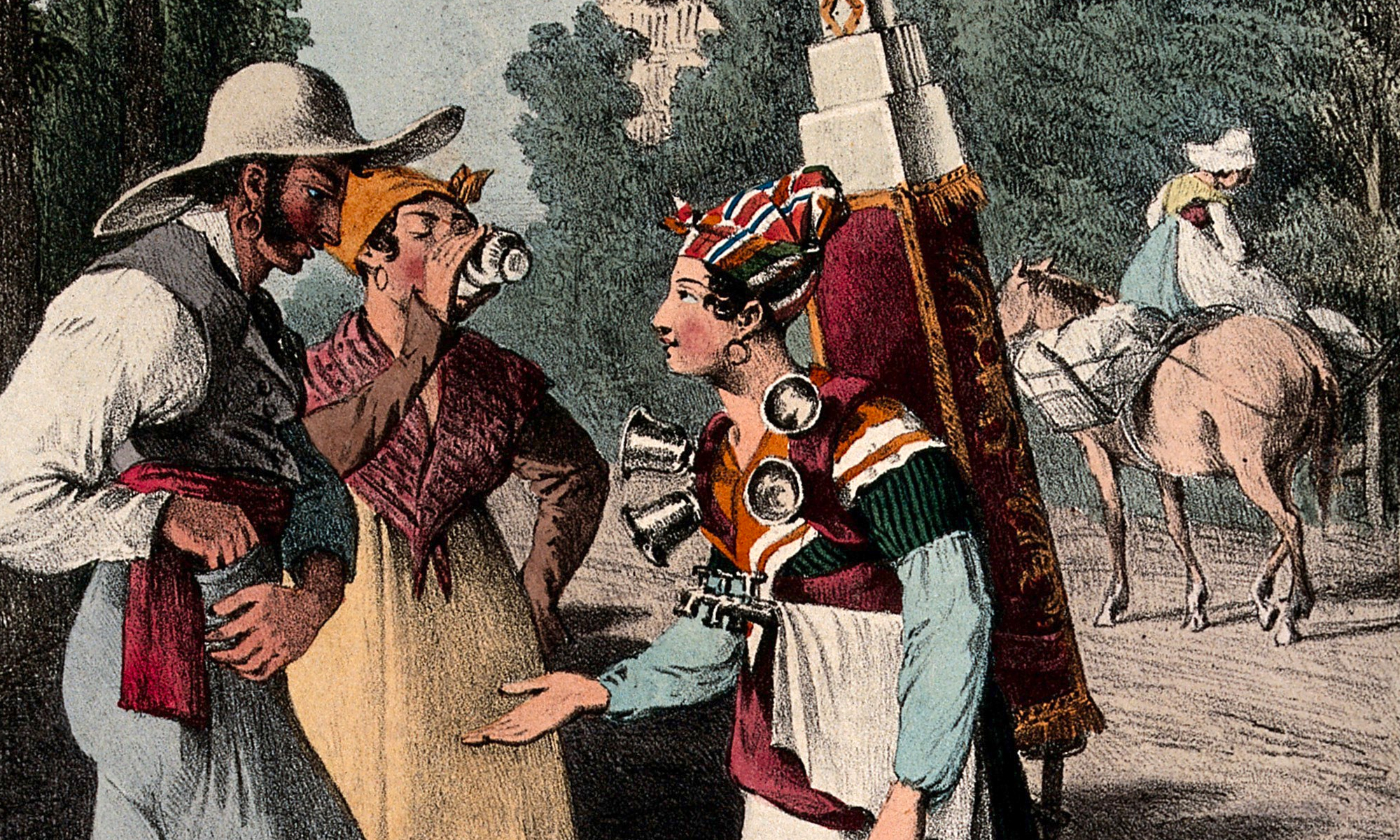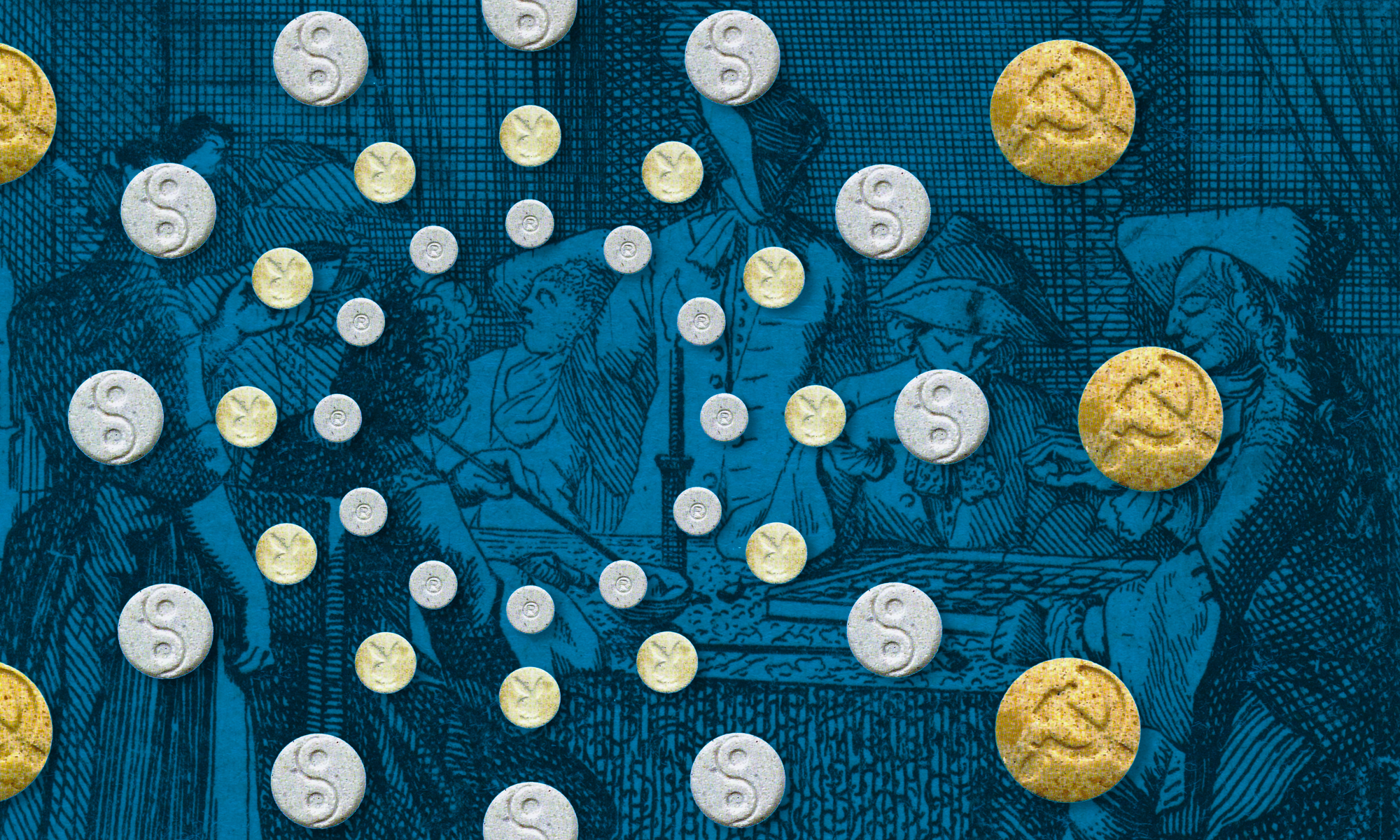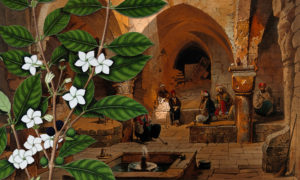Cathelijne van der Marel and Renate de Groot
Alfa Academy
Rituals Surrounding Coffee
Coffee Moments
The ritual of a coffee moment originates from the era of coffeeshops. Coffee was and is very popular, which resulted in a great number of people spending a lot of time in coffeeshops. When coffee became available to use at home, many people started to invite others to drink coffee at home. This became a ritual that has managed to withstand the test of time. Over time countries have formed their own unique rituals. In some countries coffee is a beverage that is exclusively drunk at breakfast, in other countries it is seen only as a refreshment and not to have with a meal. In 1714 the mayor of Amsterdam gifted a coffee plant to the French king which eventually led to the spread of coffee throughout the New World. After the introduction of coffee a need arose for specific products which could be used to serve coffee. Coffee pots were developed in various countries and were often seen as status symbols. In the eighteenth century coffee pots made of silver in the Louis XIV style became popular and a status symbol for the elite. After the eighteenth century coffee became available for the lower classes to serve at home. When this happened drinking coffee became a daily ritual among all layers of society.
Locations of Consumption
Before the discovery of coffee in Europe coffee shops were already popular in the Middle East. In the fifteenth century European travellers were introduced to the coffee shops in Mecca where coffee had already been introduced. The coffee shops were predominantly occupied by the elite because only the rich could afford coffee. The most important reason for the popularity of coffee in Europe is that coffee was exotic, it was a new product never seen before. Before the existence of coffee shops there was no location where coffee could be consumed in the company of others. The first coffee shop in continental Europe opened in Venice in 1683 and was named Bottega del Caffe. From that time onwards many coffee shops opened all around Europe but mostly in Venice. In 1652 one of the first coffee shops in England opened in Oxford, which contributed to the foundation of the Royal Society. The coffee shops of the past followed the same concept as the coffee shops nowadays. In the nineteenth century the reputation of coffee shops suffered due to a lot of drinking and gambling. This was resolved by opening alcohol-free coffee shops specially for people who abstained from drinking alcohol. In the past coffee shops were frequently used for gatherings. At the Green Dragon in Boston in 1773 the Boston Tea Party was planned. American coffee shops mostly attracted conservative clients. In cities with very few public buildings coffee shops could also be used for trials or council meetings.
User Groups
Coffee had a positive image as an intoxicant because it was mostly consumed by the elite. Coffee used to be only for the wealthy but over the years that has changed and coffee is now consumed by the majority of people and can be enjoyed in all layers of society. During the end of the seventeenth century coffee was only consumed by a small group of people who came from the upper levels of society and it was viewed as a very exotic and exclusive beverage. In the beginning of the eighteenth century it became more popular and was being served in coffee shops. It became cheaper which led to the user group spreading through the layers of society until it could even be consumed by the working class. Around the year 1750 it became the number one beverage. Coffee shops were at first located mostly in business districts and were used by merchants. Some coffee shops were located in gardens which made them extra popular during spring.
Rituals Surrounding XTC
Locations of Consumption
The use of XTC (otherwise known as ecstasy or MDMA) is not a crime or punishable in the Netherlands, but trading XTC is. This is why buying and selling the drug usually happens in busy places and cities where buyer and seller can blend in with the surroundings. XTC and other hard drugs are mostly consumed at festivals. XTC is still very underground as possession of XTC and trading XTC are still illegal. This results in it predominantly being sold in busy places or dark alleys, places where you can go unnoticed. At the beginning of the eighties, when XTC first became popular, the music style house was developed in Chicago. The use of XTC and house often went hand in hand. Musicians used XTC just before going on stage and the crowd was often under the influence of XTC as well. After a while XTC also spread to the Balearic party island of Ibiza, where it was used to sustain energy throughout the night. In 1987 parties in the Netherlands were organised that were called acid-house-parties. Early on in 1988 the first big acid-house-party was organised. The theme of the party was ‘trance’. Visitors were under influence of XTC amongst other narcotics. This party was a huge success which led to many more parties being organised. However, they quickly came to a halt when in November 1988 XTC was placed on list number one of the Opium Law because the government was afraid of mass production and commerce.
User Groups
Just like coffee, XTC had clearly defined user groups in its early phases. During the eighties XTC and other hard drugs were used by hippies. When house was created musicians and festival goers too were part of the user group. As the years have gone by has not changed significantly. Festival goers and musicians are still the most prominent users. This can be explained by the fact that XTC can usually be found in environments generally occupied by musicians and festival goers such as festivals.
Conclusion
Many similarities can be found between the rituals surrounding coffee and XTC, the clear user groups in the first phase of growth of popularity and the clear locations of consumption. Coffee was consumed by only the wealthiest in the first phase of standardization and later on the user group grew to all layers of society. XTC was in the beginning only consumed by hippies and this user group as well later on grew to be much larger. Furthermore, the location of consumption for coffee used to only be coffee shops but this has subsequently spread to other venues. XTC likewise had clear locations of consumption, festivals, and this too became more widely dispersed although not to the same extent as coffee. This just goes to show that XTC and coffee have much more in common than is usually thought.
Newspaper Articles & Internet Sources
- De controversiële geschiedenis van XTC
- De geschiedenis van koffie
- De geschiedenis van de koffiebonen
- De historie van koffie
- Een korte geschiedenis van koffie: hoe het drankje Europa veroverde
- Gevonden in Delpher – Noordhollandsche courant
- Is er sprake van ‘normalisering’ van drugsgebruik?
- Koffie
- Koffie als medicijn
- Koffie geschiedenis
- Koffie geschiedenis
- Koffeehuis
- Koffeehuizen
- Werelddrugskaart


